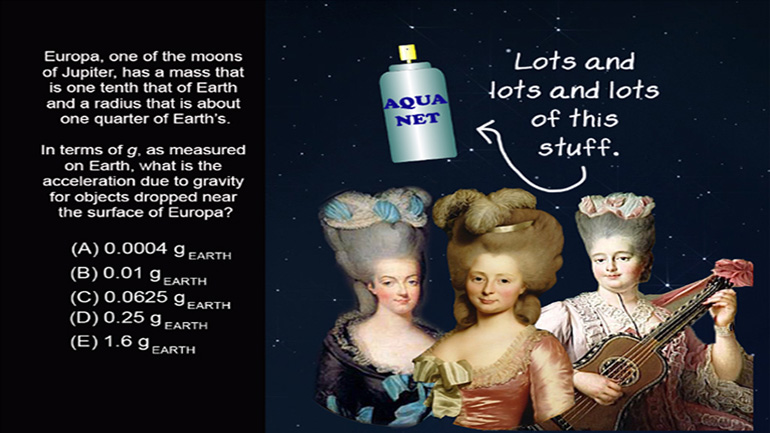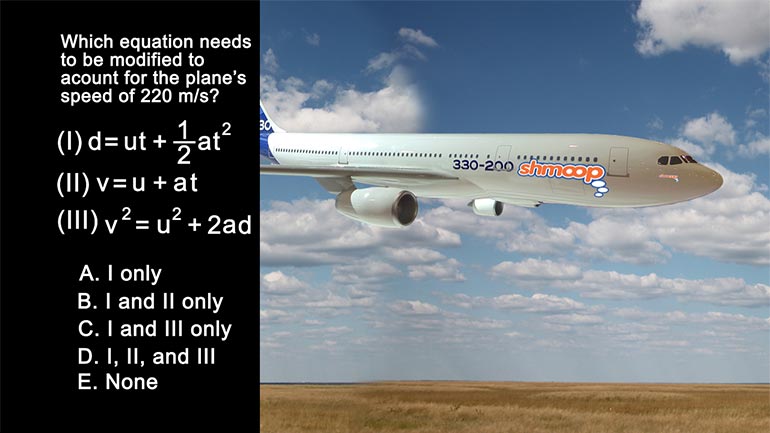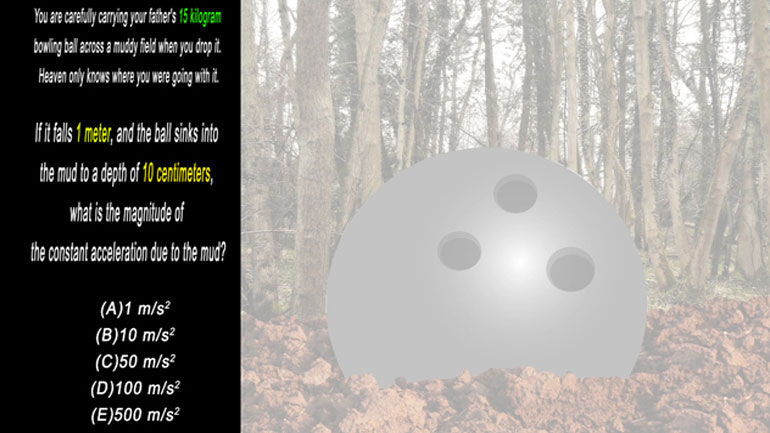ShmoopTube
Where Monty Python meets your 10th grade teacher.
Search Thousands of Shmoop Videos
AP Physics B 1.1 Waves and Optics 181 Views
Share It!
Description:
AP Physics B: Waves and Optics Drill 1, Problem 1. Which of the following is technically true for Max as he stands still at the edge of oblivion?
Transcript
- 00:03
Here's your shmoop du jour, brought to you by the Grand Canyon.
- 00:07
Almost as awe-inspiring as AP Physics.
- 00:10
Max is scolded by his parents for leaning over the railing of a dangerous vista at the Grand Canyon.
- 00:15
Mom conveys her distress as she steps back from the ledge,
- 00:18
and Dad cries out while lunging forward to grab his son.
Full Transcript
- 00:21
Which of the following is technically true for Max
- 00:23
as he stands still at the edge of oblivion?
- 00:26
You know... other than the fact that he now has proof his parents love him?
- 00:30
And here are the potential answers...
- 00:36
This problem doesn't have a lot of numbers, so it's clearly a conceptual one.
- 00:39
Heck, there are no numbers at all. If we glance at the answers,
- 00:42
we'll see that they all have to do with the perceived pitch of Max's parents' cries.
- 00:47
Also, the problem give us information on the motion of his parents.
- 00:51
When we have waves and movement, our mind should immediately snap to the Doppler effect.
- 01:01
Named for Christian Doppler, it's the phenomenon that occurs when a source of waves is in motion.
- 01:06
Say, for example, that we had a speaker emitting a tone with a frequency of 100hertz.
- 01:12
A listener 1 meter away would hear a frequency of 100 hertz.
- 01:16
A listener 2 meters away would hear the same frequency.
- 01:20
No matter how far, the sound is still 100 hertz.
- 01:23
But, uh... what the heck is a hertz?
- 01:26
A hertz is a measurement of one cycle of sound per second.
- 01:30
One hertz every second the sound wave oscillates - moves up and down - one time.
- 01:36
If a sound has a frequency of 100 hertz, it oscillates 100 times in a second.
- 01:44
This rate of oscillation determines how high or low a sound is.
- 01:47
A higher frequency means a higher sound.
- 01:50
What if the speaker starts moving?
- 01:52
If the speaker moves away from the listeners, then the distance between each wave would increase.
- 02:02
This decreases the frequency and creates a lower tone.
- 02:06
On the other hand, if the speaker moves toward the listeners,
- 02:09
the waves would become closer together, and a higher tone would be heard.
- 02:17
So Max's father moving toward him will sound higher, and his mother will sound lower.
- 02:22
The only answer that fits this description is (D).
- 02:26
Next year's family vacation?
- 02:28
Kansas.
Up Next
AP Physics B: Newtonian Mechanics Section Drill 2, problem 1. What is the acceleration due to gravity for objects dropped near the surface of Europa?
Related Videos
AP® Physics B: Newtonian Mechanics Drill 1, Problem 3. With what acceleration does lunch arrive?
AP Physics C: Newtonian Mechanics Drill 1, Problem 1. Which of Newton's equations of motion would have to be modified to account for the airplane's...
Newtonian Mechanics Drill 1, Question 1. What is the magnitude of the constant acceleration due to the mud?
AP® Physics B: Newtonian Mechanics Drill 2, Problem 2. If she is to stay on a course due north, at what angle must she point her plane?




